The Cookie Monster Alphabet
In case you or someone you know needs a little levity or pick-me-up today, might I suggest what might be the cutest thing that’s ever aired on television: a little girl named Joey and Kermit the Frog saying the alphabet.



This site is made possible by member support. ❤️
Big thanks to Arcustech for hosting the site and offering amazing tech support.
When you buy through links on kottke.org, I may earn an affiliate commission. Thanks for supporting the site!
kottke.org. home of fine hypertext products since 1998.
In case you or someone you know needs a little levity or pick-me-up today, might I suggest what might be the cutest thing that’s ever aired on television: a little girl named Joey and Kermit the Frog saying the alphabet.
Two of my biggest childhood touchstones were Sesame Street and the Muppet Show. The creative spark behind both shows was Jim Henson, the subject of a forthcoming documentary directed by Ron Howard. From the press release:
Produced with the full participation and cooperation of the Henson family, “Jim Henson Idea Man” is an unprecedented, intimate look at Henson’s illustrious, revolutionary career and complex personal life. Using never-before-seen personal archival home movies, photographs, sketches, and Henson’s personal diaries, as well as interviews with those who knew him best, the film is the definitive portrait of one of the world’s most inspiring and iconoclastic creators.
Jim Henson Idea Man will be available to stream on Disney+ on Friday. (via the kid should see this)
Street Gang: How We Got to Sesame Street, a documentary about the beloved show’s first two decades, debuts today on HBO Max. The film is based on Michael Davis’s 2009 book Street Gang: The Complete History of Sesame Street.
The documentary focuses on the first two experimental and groundbreaking decades of Sesame Street, highlighting this visionary “gang” that audaciously interpreted radical changes in society and engaged children with innovative new ways to entertain and educate.
Featuring exclusive behind-the-scenes footage and interviews with over twenty original cast members and creators, the documentary explores how the team incorporated groundbreaking puppetry, clever animation, short films, music, humor, and cultural references into each episode to keep kids and parents coming back, while never shying away from difficult conversations with children.
In a review, NY Times TV critic James Poniewozik says the film reminds us that Sesame Street was political right from the beginning:
“Sesame Street,” which premiered in 1969, was the project of Joan Ganz Cooney, a TV executive who was originally more interested in the civil rights movement than in education but came to see the connection between the two. “The people who control the system read,” she once said, “and the people who make it in the system read.” And she believed that the best way to get the kids of the 1960s to read, paradoxically, was through TV.
Her Children’s Television Workshop brought together educators and entertainers, including a puppeteer named Jim Henson and the director Jon Stone, an idealist attracted to Cooney’s idea of closing the literacy gap for inner-city Black children. “I think what drew Dad in really had to do with her political vision,” his daughter Kate Stone Lucas says in the documentary.
Patrick Stewart, displaying the Shakespearian acting chops that landed him the role of Captain Picard on Star Trek: The Next Generation, appeared on Sesame Street in 1996, performing a parody of Hamlet’s soliloquy with the letter “B”. Stewart never doesn’t give it his all when acting.
In this charming video from 1969, right before Sesame Street premiered on PBS, Jim Henson spends about 15 minutes showing how to make simple puppets out of materials you might have handy at home: cardboard, plastic cups, fabric, wooden spoons, potatoes, etc. Joining him was the designer of the Muppets, Don Sahlin.
He is “the inventor” of the Muppet look, from a design point of view. As discussed in the book Jim Henson’s Designs and Doodles, many of the Muppets began as Henson’s rough sketches, which Sahlin then built and modified as needed… Sahlin was known to refer to himself as the “guardian of the essence” of the Muppets.
Henson’s Kermit-y voice is super soothing. What a great find by the indispensable Kid Should See This.
Sad news from Sesame Street: Carroll Spinney, the puppeteer who played Big Bird and Oscar the Grouch for almost 50 years, died today at age 85.
Caroll was an artistic genius whose kind and loving view of the world helped shape and define Sesame Street from its earliest days in 1969 through five decades, and his legacy here at Sesame Workshop and in the cultural firmament will be unending. His enormous talent and outsized heart were perfectly suited to playing the larger-than-life yellow bird who brought joy to generations of children and countless fans of all ages around the world, and his lovably cantankerous grouch gave us all permission to be cranky once in a while.
Spinney had retired from the show last year, citing health concerns. Here’s a look at how he operated the Big Bird puppet (more here):
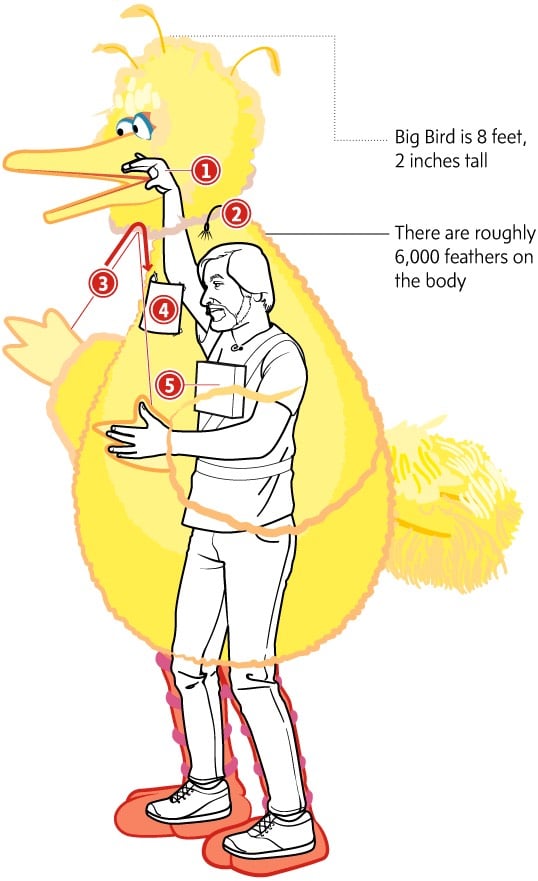
Spinney came out with a book in 2003 called The Wisdom of Big Bird (and the Dark Genius of Oscar the Grouch): Lessons from a Life in Feathers and was the subject of a 2015 documentary called I Am Big Bird. Here’s a trailer:
At Sesame Street creator Jim Henson’s memorial service at Cathedral of St. John the Divine after his unexpected death in 1990, Spinney walked out and, in full Big Bird costume, sang “It Ain’t Easy Being Green” in tribute to his friend:
Total silence after he finished…I can’t imagine there was a dry eye in the house after that. Rest in peace, gentle men.
To celebrate their 50th anniversary, the Sesame Street gang dropped by NPR for one of their Tiny Desk Concerts. They sang the theme song, People In Your Neighborhood, and four other tunes.
See also this new six-part Jim Henson documentary. Oh and Philip Glass on Sesame Street.
Defunctland has produced a six-part documentary series on Jim Henson. Each episode focuses on a different creative project that Henson did. Here’s the trailer:
The first four episodes are already out…here’s the second episode on Sesame Street:
You can watch the rest of them on YouTube.
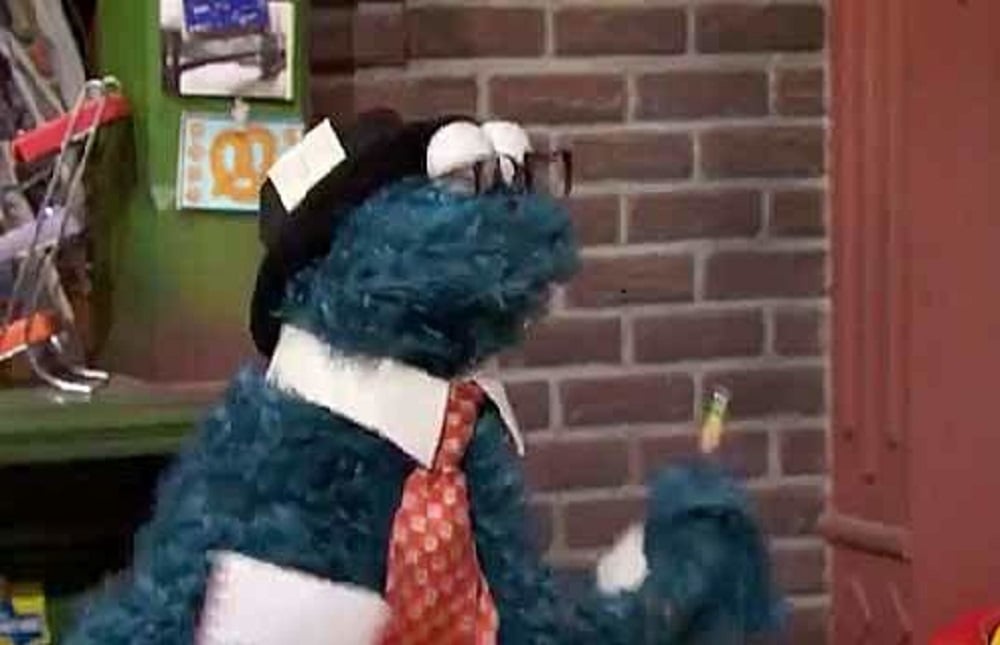
We’ve established that I’m a huge fan of Cookie Monster, the most orally challenged but also the most literarily adept muppet. But even with those cards on the table, this Reddit AMA is something special.
Q: Is there anything you won’t eat? I mean, I’ve seen you eat a typewriter before…
A: Me stay away from anything in Oscar’s trashcan. Otherwise me not picky.
Q: My 7-year-old daughter is about to start selling cookies for Girl Scouts. Do you have any advice for her?
A: Don’t eat the product!
Q: There’s been a lot of famous people who have come to visit you and your friends on Sesame Street! Did any of those guests give you a cookie?
A: Me friends have surprised me with lots of cookies! Sir Ian Mckellan even gave me two cookies!
Q: Who would you most like to sing a “C is for Cookie” duet with?
A: Me would love to sing duet with Lady Gaga. Me and me friends are monsters after all. Me hope she see dis!
Q: What is the optimum number of chocolate chips per cookie?
A: Me always say the more the merrier. Me think me need at least 3.14 chocolate chippies per nom nom. MMM pi
Q: If you could only eat one type of cookie for the rest of your life, what would it be?
A: Wow! Me didn’t realize these question be so hard. If me had to choose just one cookie, me would have to pick me Mommy’s classic chocolate chippie!
Q: We know cookies are your favourite food. What is your second favourite food?
A: Can me say more cookies…?
A2: Me thought it over. Definitely “more cookies.”
Q: My son is your biggest fan in the world. His name is Nico and he’s almost 2. Any words of advice for him???
A: Me think it important to always share your cookies. Me know it hard to do sometimes, but it da kind thing to do.
A2: Oh, and HI NICO! Me love you!
Q: What was it like working with Jim Henson?
A: Me never sure what he did, but he always around to lend a hand and give me cookie!
Q: How’s the rent on Sesame Street?
A: Me think you confused…. Rent played on different street, me think Broadway?
It goes on and on like this. Maybe I’m too much of a softie (probably underbaked… god, it’s contagious), but I love this.

Sesame Street puppeteer Caroll Spinney is retiring after almost 50 years, and everybody is leading with the fact that he played and voiced everybody’s favorite, Big Bird. And then, if they get a chance, they might get around to mentioning that other iconic character he gave a voice and a soul, one of my favorites, Oscar the Grouch.
Karen Zraick writes about Oscar and his origins in the New York Times:
In his book “The Wisdom of Big Bird (and the Dark Genius of Oscar the Grouch),” Mr. Spinney wrote that he based Oscar’s voice on a surly cabdriver from the Bronx who took him to a meeting.
“He was the stereotypical cabby of the time — a guy in his 40s from the Bronx wearing a tweed cap with a little brim — and he kind of growled out of the corner of his mouth, ‘Where to, Mac?’” Mr. Spinney wrote.
He had found “the ideal model” for his new character, and he marveled as the driver “went on and on, colorfully expressing his opinion of Mayor Lindsay with a lot of four-letter words.”
Travis Andrews does the same in the Washington Post:
The purpose of Oscar, according to the Smithsonian National Museum of American History’s description of the character, is to teach “the importance of understanding, tolerance, and diversity.” According to Robert W. Morrow’s book “‘Sesame Street’ and the Reform of Children’s Television,” Oscar acted differently and lived in a different kind of home as a metaphor, “to dramatize tolerance for those who are different. … In segments about conflicts between Oscar and the others on the street, the show taught how children might cope with diversity in the context of school desegregation.”
Ok, sure. Ariane Beeston at Essential Kids more thoroughly spells out Oscar’s character, and its effect and appeal:
1. It’s okay to be different;
2. One man’s trash is another grouch’s treasure;
3. Embrace who you are and be yourself;
4. Just because you’re grouchy, doesn’t mean you can’t also be kind;
5. Emotions can be confusing.
Almost everyone gives credit to Spinney for giving Oscar his emotional complexity, with a simple mandate: Oscar is always grouchy and contrarian, but Oscar is never mean or cruel. In short, Oscar always has a heart. Let’s hope Spinney’s successor can continue to thread that needle. The kids of the present and the future deserve an Oscar who can be everything that he is.
If you grew up watching Sesame Street but are now old enough to realize that Bert, Ernie, Big Bird, and Oscar aren’t actually real, this behind-the-scenes video about how the puppets are controlled is a must-see. What struck me most was that the puppeteers do both the movement and the voice for these characters…the guy inside the Snuffleupagus suit is actually speaking the lines. It would be so easy to separate the two activities with voiceovers added later, but I bet the final result wouldn’t be as good as using the on-set full-body performance.
See also Four things about Mr. Snuffleupagus, including the unusual reason his existence was finally revealed to the grownups on the show. (via @simplebits)
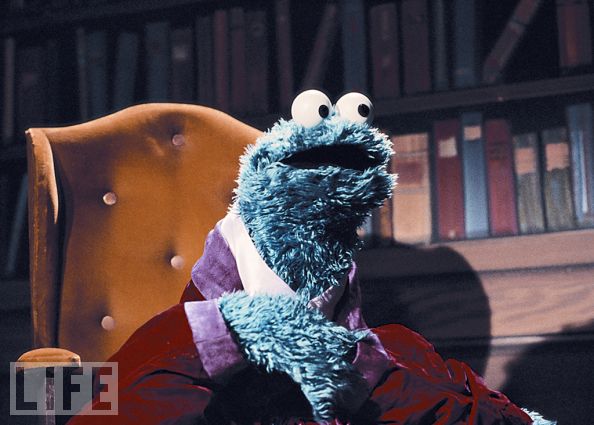
In De pueris instituendis (On the education of children, 1529), the great Renaissance humanist Erasmus, borrowing from the classical rhetoricians Horace and Quintillian, helped reintroduce an important idea:
I have now come to the stage of my argument where I shall briefly explain how love of study may be instilled in children - a subject which I have already touched upon in part. As I have said, through practice we acquire painlessly the ability to speak. The art of reading and writing comes next; this involves some tedium, which can be relieved, however, by an expert teacher who spices his instruction with pleasant inducements. One encounters children who toil and sweat endlessly before they can recognize and combine into words the letters of the alphabet and learn even the bare rudiments of grammar, yet who can readily grasp the higher forms of knowledge. As the ancients have demonstrated, there are artful means to overcome this slowness. Teachers of antiquity, for instance, would bake cookies of the sort that children like into the shape of letters, so that their pupils might, so to speak, hungrily eat their letters; for any student who could correctly identify a letter would be rewarded with it.
In grad school, I worked with a British literary historian who expertly broke this down into a post-psychoanalytic framework. Biscuits, like speech and writing, form a circuit between the eyes, hand, and mouth. The regulation of desire clears the way for the discipline of discourse. Like Plato, we move from the immanent and particular to the abstract and universal, but this is always mediated by the body, whose conflicting drives trouble these ideal categories.
I responded: “It’s Cookie Monster.” Growing up in England, he’d never heard of him.
Cookie’s idiosyncratic pronouns and truncated consonant clusters are a ruse. He’s easily the most verbally adept, best-educated character on Sesame Street. He teaches children the alphabet and vocabulary, and of course doubles as Alistaire Cookie on Monsterpiece Theatre. The growly voice, googly eyes, and outsized yearnings mask the heart of a scholar.
I bet he used to be a graduate student. You can’t show any of us free food without us reacting like this.
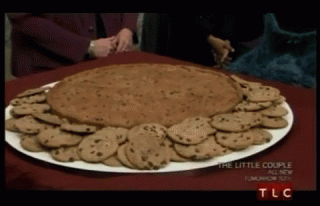
He even loves absurdist metafiction:
Cookie is all of us who always get underestimated, just because we refused to always change how we talk and how we act because we went to school. But we love those sweet leatherbound books, too.
NOTE: Cookie Monster was invited and was originally slated to collaborate on this post. He was excited; I was excited. Unfortunately, due to a scheduling conflict, he wasn’t able to appear. You have his and my regrets. (I swear on Mr. Snuffleupagus: All of this is 100 percent true.)
I mean, this is pretty good, but the original Sesame Street rap mashup is hard to top:
Respect.
From 1971, here’s Jessie Jackson on Sesame Street doing a call-and-response with the children of the poem I Am - Somebody.
I Am
Somebody
I Am
Somebody
I May Be Poor
But I Am
Somebody
I May Be Young
But I Am
Somebody
I May Be On Welfare
But I Am
Somebody
It’s difficult to imagine something like this airing on the show now. Sesame Street was originally designed to serve the needs of children in low-income homes, but now the newest episodes of the show air first on HBO…a trickle-down educational experience. (via @kathrynyu)
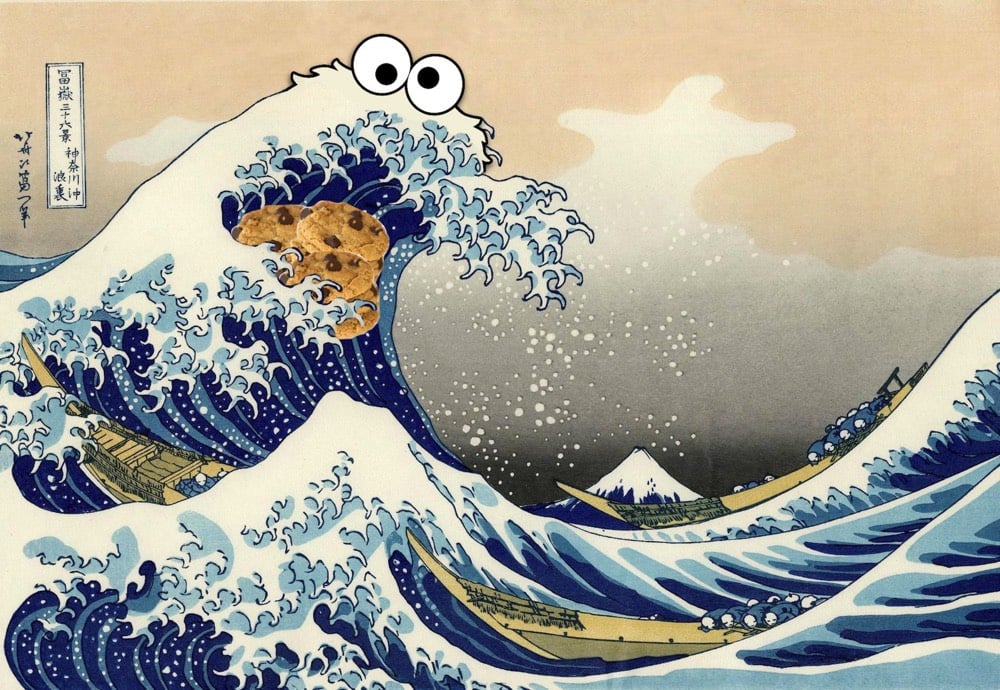
Magisterial. The Great Wave off Kanagawa by Katsushika Hokusai, modified by Reddit users Put_It_All_On_Red and photosonny. (via @craigmod)
These crayon sculptures by Hoang Tran are amazing.
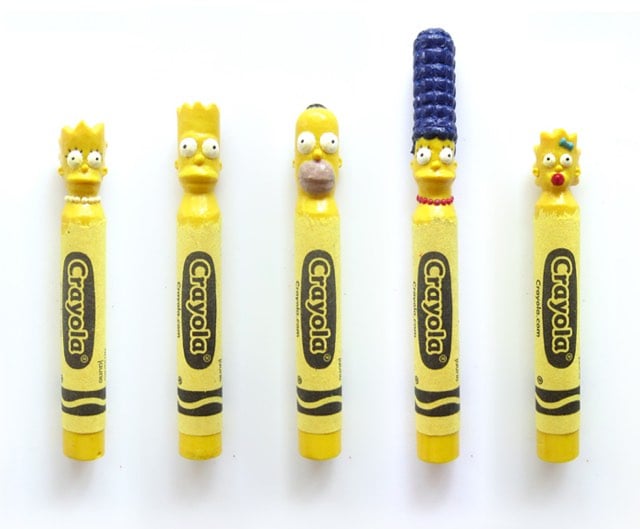
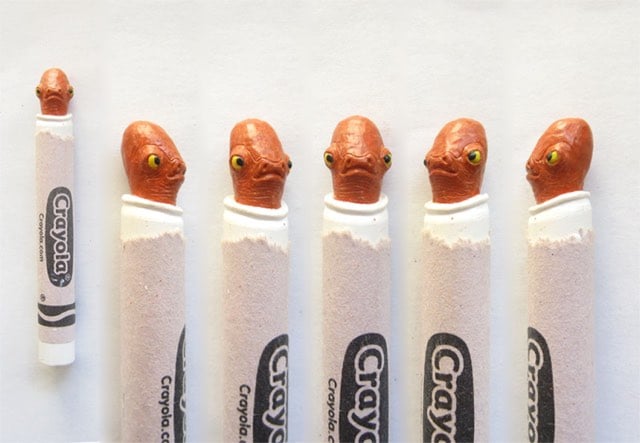
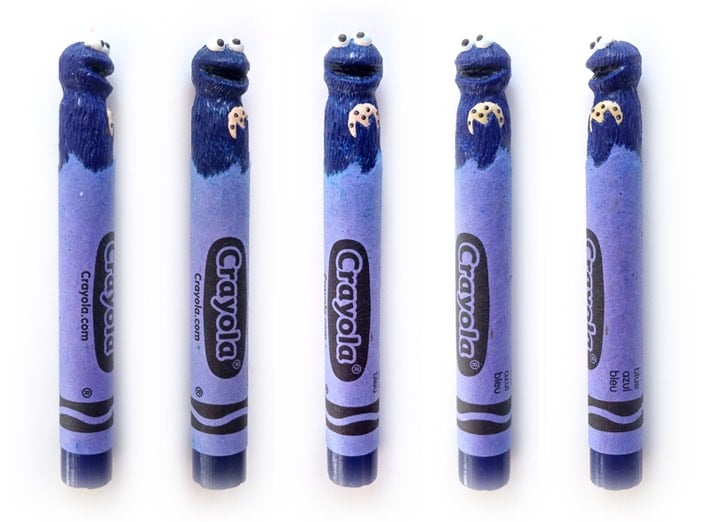
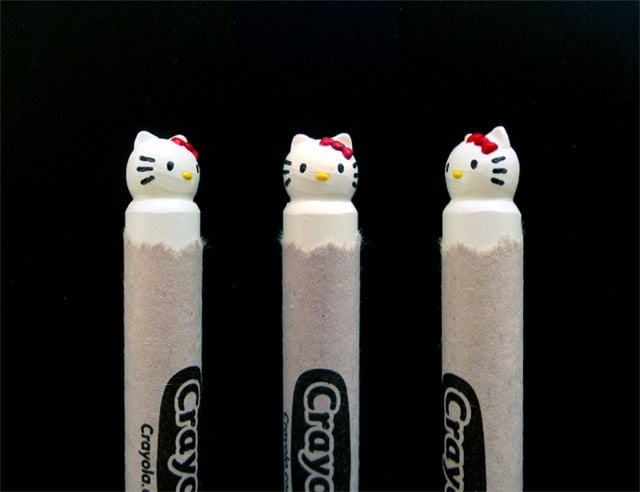
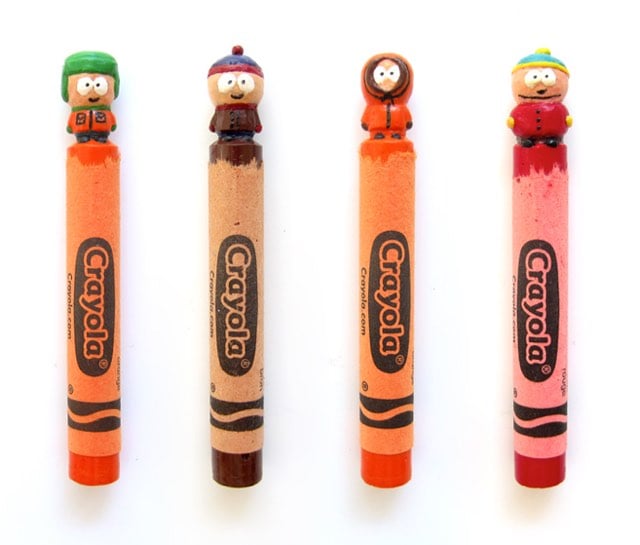
Select sculptures are available on Etsy. (via ignant)
Dan Lewis is the director of new media communications at Sesame Street, which I’m sure is hard work but sounds like the best job in the world.
For years, he’s also run a daily email newsletter called “Now I Know,” featuring little science and history vignettes. For example, did you know… Abraham Lincoln signed the legislation creating the US Secret Service the day he was fatally shot… in order to investigate counterfeit money schemes. (Which is why the Secret Service was part of the Treasury department before being absorbed into Homeland Security.)
Now Dan has put those stories in a book, also called Now I Know, available for preorder for October 18. It’s like a newer, less snarky iteration of Cecil Adams’ The Straight Dope. Or, even better, Cliff Clavin’s CliffsNotes.
PS: Tell me on Twitter: did Notorious B.I.G. really coin (and not just popularize) “and if you don’t know, now you know” with “Juicy”? I swear, as a younger teenager pretty much immersed in hip-hop, I remember that that specific phrase being in the air or even in a song or by a comic or DJ well before 1994. But it’s in that weird window of 1990s history where Google gets all tangled and useless. You know, this is the sort of question I should probably be asking Dan Lewis.
The first season of Sesame Street aired in 1969-1970 and this photo of the cast dates from then:
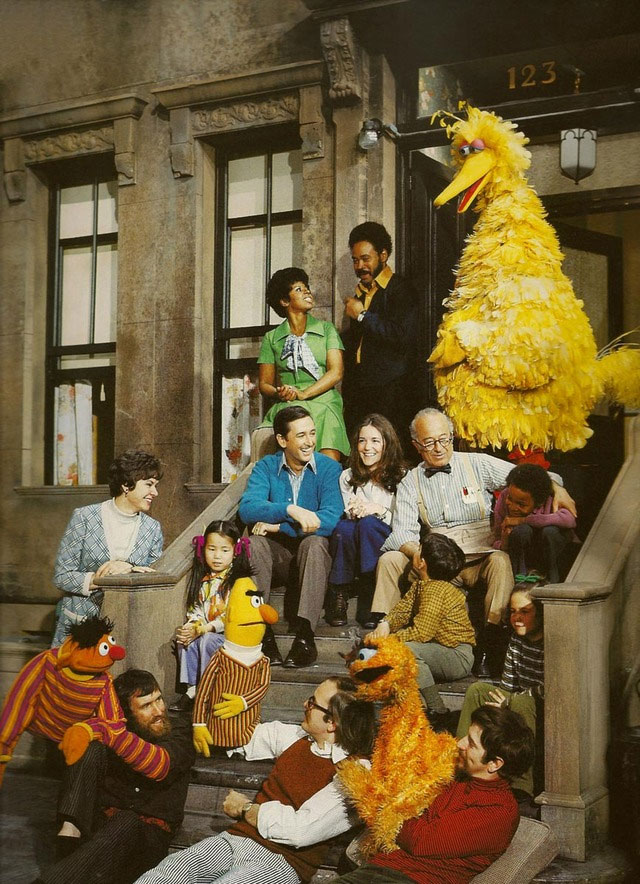
The giveaway is Oscar the Grouch’s orange fur…it would switch to green for the second season. Here’s the first 15 minutes of the first episode:
And here’s part 2, part 3, and part 4.
Sesame Street is insane, BTW. They aired 130 60-minute episodes over six months for that first season and over its 43 seasons, the show has averaged 100 episodes per season. A truly amazing combination of quantity and quality.
Sesame Street did a series of tweets the other day in the style of The Monster at the End of This Book, which is a favorite of mine and my kids.
Grover: That tweet, did it say there was a MONSTER at the end of it?
Grover: It did? Well, please do not retweet that tweet!
Grover: YOU RETWEETED THE TWEET!
Today being the first day of Spring, it is also Big Bird’s birthday. To celebrate, the Sesame Street blog posted an interview with Big Bird creator, Caroll Spinney, who shared anecdotes from BB’s life. Interestingly, Big Bird used to celebrate his 4th birthday, but since he learned how to read, he now celebrates his 6th birthday. And has for quite some time. Dude never seems to age.
Since he couldn’t read or write, he was 4-years-old. By the end, he was writing little poems and stuff, so then he had to be six so he could read. He’s turning six and he always turns six. His birthday came about on a calendar on the early days of the show. Someone decided he should have a birthday and I decided it should be the first day of spring.
Then Spinney brought everyone’s good cheer down a notch by talking about Mr. Hooper.
They said, “Don’t’ you understand? Mr. Hooper has died.” And I said, “Yes, well when is he coming back?” They said, “Don’t you understand? Mr. Hooper is never coming back,” and quickly everyone is moved to tears. It was probably the most sensitive show we have ever done. When we finished there were tears on all the actors’ faces. When I came out of the suit, I had to have a towel because I had been crying.
Lastly, aside from never aging in 40+ years of birthdays, it must be weird to have a birthday on a calendar date that has changed over time. Remember when the first day of Spring was March 21st?
(via Dan Lewis who you might want to check out if you like learning a new thing everyday)
Being Elmo is a documentary about the puppeteer who performs Sesame Street’s Elmo. It looks fantastic.
(via unlikely words)
Sesame Street characters, including Grover on the flute, perform the Beastie Boys’ Sure Shot.
(via devour)
Here’s his audition video:
Fantastic idea…I would love to see a Saturday Night Live with Sesame Street characters. Hey, if 30 Rock is really The Muppet Show…
1. His full name is Aloysius Snuffleupagus.
2. For more than 14 years, Big Bird was the only character on Seasame Street who could see Snuffy…he was BB’s imaginary friend.
3. Some of the grownups on the show came to believe Big Bird about the existence of Mr. Snuffleupagus and he was revealed to them in November 1985:
4. Snuffy’s reveal came about because of some high-profile sexual abuse cases:
In an interview on a Canadian telethon that was hosted by Bob McGrath, Snuffy’s performer, Martin P. Robinson, revealed that Snuffy was finally introduced to the main human cast mainly due to a string of high profile and sometimes graphic stories of pedophilia and sexual abuse of children that had been aired on shows such as 60 Minutes and 20/20. The writers felt that by having the adults refuse to believe Big Bird despite the fact that he was telling the truth, they were scaring children into thinking that their parents would not believe them if they had been sexually abused and that they would just be better off remaining silent.
(via @h_fj)
From 1971, a critique of Sesame Street from The Atlantic.
Nonetheless, and in spite of all its successes, I feel very strongly that Sesame Street has aimed too low, has misunderstood the problem it is trying to cure, and will be a disappointment in the long run. I also feel that it has misunderstood the nature and underestimated the opportunities of its chief subject, the three R’s, and its medium, television; and therefore, that even what it sets out to do in the short run it does not do nearly as well as it might.
Loved this when I was a kid; all those shapes right there in those circles.
This is probably my all-time favorite childhood TV moment. I loved watching the smiling workers and relentless machinery turn all that formless wax into something that I USED EVERY DAY. My favorite part is the crayons popping up out of their molds. Still gives me chills, it does! BTW, the YouTube page says the video originated from Sesame Street but it was actually from Mr. Rogers’ Neighborhood. (thx, janelle)
Update: I stand corrected…the above clip is from Sesame Street. But Mr. Rogers did show a similar clip on his show (stills here). I know I’ve seen the one on Mr. Rogers but I don’t know about the Sesame Street one. (thx, everyone)
Update: Ok, here’s the clip from Mr. Rogers. Its pace is a lot more leisurely than the Sesame Street clip.
Update: Richard Harvey composed the music for the Sesame Street segment in 1978. In this video, talks about how he put the track together.
(thx, sara)
The Cookie Monster engaging in some serious but healthy self reflection.
Me know. Me have problem. Me love cookies. Me tend to get out of control when me see cookies. Me know it not natural to react so strongly to cookies, but me have weakness. Me know me do wrong. Me know it isn’t normal. Me see disapproving looks. Me see stares. Me hurt inside.
Stay Connected